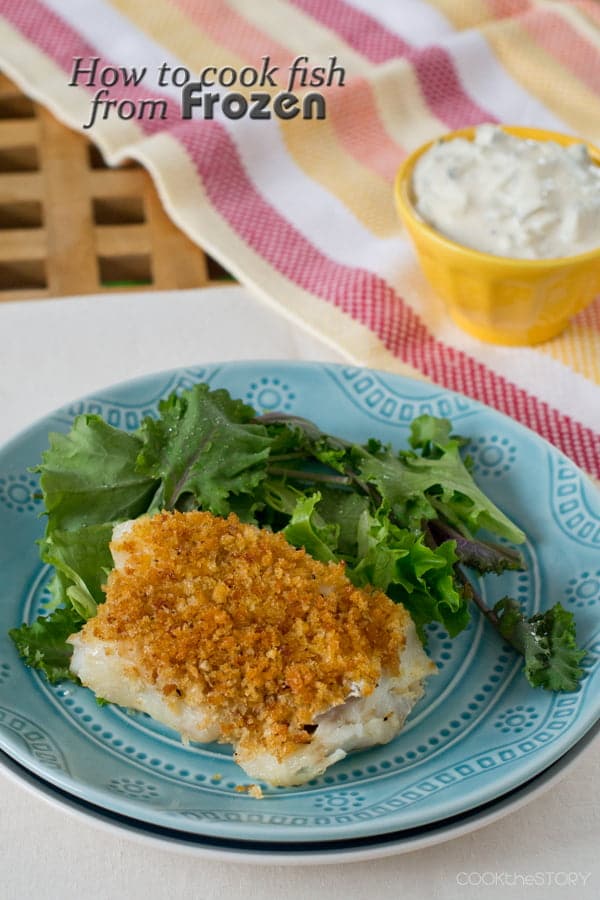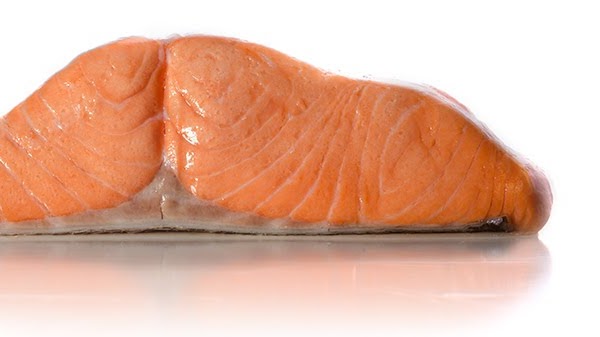Smoked salmon is a preparation of salmon, typically a fillet that has been cured and hot or cold smoked. Due to its moderately high price, smoked salmon is considered a delicacy. Although the term lox is sometimes applied to smoked salmon, they are different products.

Presentation
Smoked salmon is a popular ingredient in canapés, often combined with cream cheese and lemon juice, or "bulked out" with other fish.
In North America, smoked salmon is likely to be sliced very thinly and served on bread with cream cheese or with sliced red onion, lemon and capers. In the Pacific Northwest of the United States and Canada, smoked salmon may also be fillets or nuggets, including hickory or alder-smoked varieties and candied salmon (smoked and honey, or sugar-glazed, also known as "Indian candy").
In Europe, smoked salmon may be found thinly sliced or in thicker fillets (such as "tsar fillet" or "Royal Fillet", as invented by H. Forman and Son) or sold as chopped "scraps" for use in cooking. It is often used in pâtés, quiches and pasta sauces. Scrambled eggs with smoked salmon mixed in is another popular dish. Smoked salmon salad is a strong-flavored salad, with ingredients such as iceberg lettuce, boiled eggs, tomato, olives, capers and leeks, and with flavored yogurt as a condiment.
Slices of smoked salmon are a popular appetizer in Europe, usually served with some kind of bread. In the United Kingdom they are typically eaten with brown bread and a squeeze of lemon, although lemon is usually used to mask poor quality very oily salmon; in Germany they are eaten on toast or black bread.
In Jewish cuisine, smoked or brined salmon is called lox and is usually eaten on a bagel with cream cheese.
Smoked salmon is sometimes used in sushi, though not widely in Japan; it is more likely to be encountered in North American sushi bars. The Philly Roll combines smoked salmon and cream cheese and rolls these in rice and nori.
How To Cook Frozen Salmon Video
Production
In the Atlantic basin all smoked salmon comes from the Atlantic salmon, much of it farmed in Norway, Scotland, Ireland and the East coast of Canada (particularly in the Bay of Fundy).
In the Pacific, a variety of salmon species may be used. Because fish farming is prohibited as a matter of state law, all of Alaska's salmon species are wild Pacific species. Pacific species of salmon include chinook ("King"), sockeye ("red"), coho ("silver"), chum (keta), and pink ("humpback").
Cold smoking
Most smoked salmon is cold smoked, typically at 37 °C (99 °F). The cold smoking does not cook the fish, resulting in a delicate texture. Although some smoke houses go for a deliberately 'oaky' style with prolonged exposure to smoke from oak chips, industrial production favours less exposure to smoke and a blander style, using cheaper woods.
Originally, prepared fish were upside hung in lines on racks, or tenters, within the kiln. Workers would climb up and straddle the racks while hanging the individual lines in ascending order. Small circular wood chip fires would be lit at floor level and allowed to smoke slowly throughout the night. The wood fire was damped with sawdust to create smoke; this was constantly tended as naked flames would cook the fish rather than smoke it. The required duration of smoking has always been gauged by a skilled or 'master smoker' who manually checks for optimum smoking conditions.
Smoked salmon was introduced into the UK from Eastern Europe. Jewish immigrants from Russia and Poland brought the technique of salmon smoking to London's east End, where they settled, in the late 19th century. They smoked salmon as way to preserve it as refrigeration was very basic. In the early years, they were not aware that there was a salmon native to the UK so they imported Baltic salmon in barrels of salt water. However, having discovered the wild Scottish salmon coming down to the fish market at Billingsgate each summer, they started smoking these fish instead. The smoking process has changed over the years and many contemporary smokehouses have left the traditional methods using brick kilns behind in favour of commercial methods. Only a handful of traditional smokehouses remain, such as John Ross jnr and Sons in Aberdeen and the Stornoway smokehouse on the Isle of Lewis.
The Northwest Indian Tribes and Alaska Natives have a cold smoking style that is wholly unique, resulting in a dried, "jerky-style" smoked salmon. In the Pacific Northwest this style of salmon has been used for centuries as a primary source of food for numerous Indian tribes. Traditionally smoked salmon has been a staple of north-western American tribes and Canadian First Nations people. To preserve indefinitely in modern times, the fish is typically pressure-cooked.
Hot smoking
Commonly used for both trout and salmon, hot smoking 'cooks' the salmon making it less moist, and firmer, with a less delicate taste. It may be eaten like cold smoked salmon, or mixed with salads or pasta. It is essential to brine the salmon sufficiently and dry the skin enough to form a pellicle prior to smoking. Without a sufficient pellicle, albumin will ooze out of the fish as it cooks, resulting in an unsightly presentation.
Brining salmon
There are three main curing methods that are typically used to cure salmon prior to smoking.
- Wet brining: Brining in a solution containing water, salt, sugar, spices, with (or without) sodium nitrite for a number of hours or days.
- Dry curing: This method is a method often used in Europe, in which salmon fillets are covered with a mix of salt, sugar, and sometimes other spices (traditional London Cure smoked salmon uses salt only). Dry curing tends to be faster than wet brining, as the salt tends to draw out moisture from the fish during the curing process and less drying time is needed in the smokehouse.
- Injection: This is the least typical method as it damages the delicate flesh of salmon. This is the fastest method of all as it injects the curing solution -- hence allowing a faster cure throughout the flesh.
The proteins in the fish are modified (denatured) by the salt, which enables the flesh of the salmon to hold moisture better than it would if not brined. In the United States, the addition of salt is regulated by the FDA as it is a major processing aid to ensure the safety of the product. The sugar is hydrophilic, and also adds to the moistness of the smoked salmon. Salt and sugar are also preservatives, extending the storage life and freshness of the salmon. Table salt (iodized salt) is not used in any of these methods, as the iodine can impart a dark color and bitter taste to the fish.
Curing
Indian hard smoked salmon is first kippered with salt, sugar and spices and then smoked until hard and jerky-like. See cured salmon.
The Scandinavian dish gravlax is cured, but is not smoked.

Labelling
In the UK, "Scottish smoked salmon" is sometimes used to refer to salmon that is smoked in Scotland but sourced from elsewhere. This is despite Food Standards Agency recommendations that such salmon be described as "Salmon smoked in Scotland" instead. Labelling must also include the method of production ('farmed', 'cultivated', 'caught').
Are You Looking for Products
Here some products related to "Smoked Salmon".
Lodge Pro-Logic P14P3 Cas..
Easy Freezer Meals 2.0: Y..
Amazon.com : Polar Bonele..
Catfish Recipes: The Ulti..
Get these at Amazon.com* amzn.to is official short URL for Amazon.com, provided by Bitly
Source of the article : here






EmoticonEmoticon